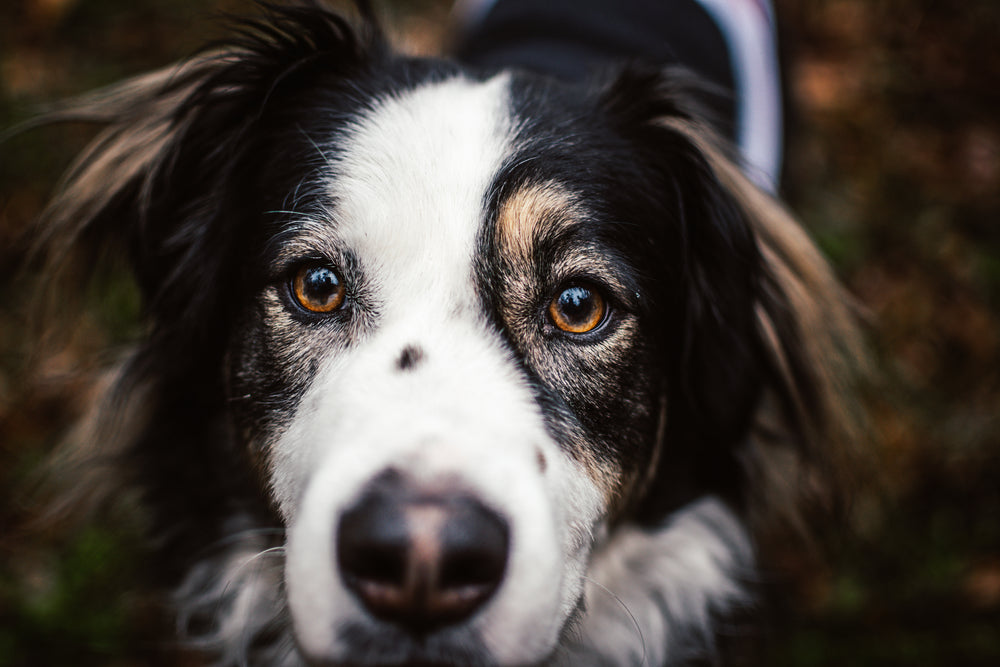

How dogs see the world
As any dog owner knows, our canine companions can be remarkably empathic, intuitive, and – in many ways – similar to us. Let’s be honest, who hasn’t been able to relate to their dog excitedly running to the door to greet a special visitor? Or jumping for joy at dinner time?
But even though our four-legged friends are so warm and relatable, there are a few key differences in how we, and they, view the world.
Let’s take a glance at how things look from a dog’s-eye perspective.
What’s canine eyesight like?
On a basic level, the anatomy of a dog’s eye is similar to the anatomy of a human eye. They have upper and lower eyelids, a pupil, lens, cornea, iris and retina.
Much like us, a dog’s retina also includes two types of light-sensitive cells, known as ‘rods’ and ‘cones’. A key difference, though, is that dogs have far fewer ‘cones’ (which are involved in colour perception and detailed vision), and far more ‘rods’ (which are involved in motion-detection, and vision in dim light).
Dogs also have a layer of tissue in their eyes which we don’t have, called the tapetum lucidum, that reflects light into the retina.
Here’s what some of these differences mean…
Dogs can see colour (but not as much of it as us)
The old stereotype is that dogs only see in black and white, but that’s not actually true. Not only do dogs see in colour, but they can comfortably differentiate between a variety of different colours and shades.
That being said, dogs don’t see as much colour as we do.
Human beings have what’s known as ‘trichromatic vision’. This means that we see three colours – red, green, and blue – and the many different shades between them.
Dogs, on the other hand, have ‘dichromatic vision’. This means they only see two colours, and – in their case – they lack the ability to see red.
With dichromatic vision, dogs still experience a pretty colourful world. But since they don’t see shades of red, they’re not quite getting as much of a vibrant view of the world as we do.

Dogs can’t see as far as us
The average human should generally have 20/20 vision, unless they’ve got some degree of myopia. Dogs, though, have something more like 20/75 vision on average. Essentially, this means they just can’t recognise objects as far away as we can.
Dogs have night vision we could only dream of
While it’s usually cats that get all the praise and acclaim for their great night vision, canine night vision is nothing to sniff at either.
Between the higher number of rods in a dog’s retina, and the tapetum lucidum reflecting light into the retina, dogs have great night vision – certainly way better than we could ever dream of.
Dogs have a great field of vision (and they’re very good at spotting movement)
Dogs are very sensitive to motion – which, again, seems to be linked to the high number of rods in their retinas. Small movements in the grass, or small changes in your posture, are likely to be very apparent and meaningful to your pup.
As well as this, dogs also have a great field of vision compared to us. Their wider-set eyes mean they don’t see things as precisely as we do, but they have significantly better peripheral vision. Put this together with their great motion detection, and dogs tend to be very alert to what’s happening around them.

Dogs ‘see’ a lot more of the world through their other senses
If you’ve ever used a dog whistle, you’ll know that they can work like magic. One moment you’re blowing through a tube that seems to create no sound, and the next moment your four-legged friend comes bounding into the room like they’ve just materialised out of nowhere.
It’s hardly a secret that dog whistles work because they emit sound in the ultrasonic range – and dogs, with their super-acute hearing, are able to hear sounds that we can’t.
When we’re discussing how dogs ‘see’ the world, it’s important to realise that there’s more to the picture than just the sense of sight itself.
As well as having highly acute hearing, dogs also have a very powerful sense of smell – which is why they’re used for all sorts of important work, from bomb detection, to tracking missing persons.
Even more amazingly, dogs may ‘see’ with their other senses in more than just a metaphorical way. A 2022 study published in the Journal of Neuroscience found evidence of strong connections between a dog’s sense of smell and the visual centres of the brain. The implications of this research still need to be explored, but it looks like there’s a lot more to how our canine companions experience the world than at first meets the eye.

How do dogs see us?
When we look at our dogs, we generally see lovable, loyal bundles of fur, who are overjoyed to greet us when we get home after a long day at work.
But how do our dogs actually see us?
Your dog really does think you’re amazing
In a development that isn’t likely to surprise anyone, our canine companions do seem to genuinely like us. One 2015 study found evidence that the reward centres in dogs’ brains light up when they smell familiar humans. The surprising twist? This phenomenon didn’t occur when dogs smelt familiar dogs, or when they smelt strange humans. There’s just something especially rewarding and heart-warming to dogs, about the scent of their very own humans.
Your dog isn’t too interested in looking at your face (but they’re still good at reading your facial expressions)
In what may be strange and even upsetting news for dog owners, our four-pawed friends don’t seem naturally very fixated on faces. In fact, a 2020 article in the Journal of Neuroscience found that – unlike us – dogs showed no difference in brain activity when looking at a face, versus the back of a head.
At the same time, other research has found that dogs excel in reading human social cues, including facial cues. So, even if they’re not naturally too focused on faces, our dogs still seem to put in some real effort to notice and understand our expressions.
Ultimately, it seems like our dogs take a great deal of interest in us. It’s just that they prefer to focus on different social cues and sensory details more than we do.
Your dog knows you’re not a dog
It’s sometimes assumed, or half-jokingly said, that dogs view their owners as other dogs… just strange dogs with confusing posture and opposable thumbs.
Considering the evidence that dogs react differently to other dogs than they do to humans, though, it’s a pretty safe bet that your canine companion knows you’re not the same species. They’re just good-natured enough to not hold that fact against you.

It’s important to keep your dog active so they can keep experiencing the wonders of the world
As we’ve touched on throughout this article, dogs see and relate to the world around them in a very direct and experiential way. Instead of just viewing a fascinating new landscape, or a new friend-to-be, primarily with their eyes, your dog revels in exploring all the sounds, smells, and tactile experiences involved in every moment.
This is just one of the many reasons why it’s important to keep your dog physically active throughout their life. Because, for our canine companions, going for a stroll through a beautiful meadow or a patch of woodland is about so much more than just getting some exercise. It’s about really ‘seeing’ the world in all its richness.
Has your dog recently seemed more withdrawn from the world and less interested in their surroundings? Maybe they’ve haven’t been as excited about going for walks? If so, joint stiffness could be to blame. Consider giving them YuMOVE Joint Care PLUS, our high-strength joint supplement for dogs, which delivers visible results in just 6 weeks or your money back.*






